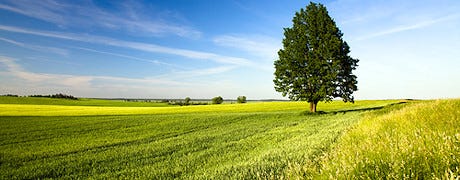
Rob Kallenbach applied nitrogen fertilizer to his fall stockpile grazing plots just like he has mid-August every year at the University of Missouri Forage Systems Research Center.
And every August, when it hasn't rained for a while, farmers ask if they should fertilize their pastures to grow more fall grass.
"They seem to think if it hasn't rained in a while, it may never rain again," says the MU Extension forage specialist. "My response: It always rains, eventually."
However, those fertilizer questions seem more urgent this year, after the worst drought since the 1930s.
Kallenbach sticks by his standard answer. "It will rain again."

MU forage specialist says fertilize fall pasture and wait for rain
He backed his belief by applying nitrogen to his research plots. "I'm going to have some of the best data ever on the value of autumn-applied nitrogen," he predicts.
If farmers wait to apply fertilizer until it rains, a major part of the benefit will be lost. Early growth right after the first rain is the best. If growth starts at first rain, the grass will have a longer fall growing season.
"Even if normal fall rains don't return, any added growth will be worth that much more," Kallenbach figures.
With fall fertility, the cool-season grasses can get an added boost in production. Usually that late growth is stockpiled; that is, not grazed right away but saved to provide winter grazing. Grass provides better nutrition than hay for winter feeding.
When cows harvest the grass, they eliminate costs of cutting, baling and storing hay. "Grazing stockpile takes a lot less work," Kallenbach adds.
Because of the shortage of both pasture and hay this year, fall growth will be even more useful, he points out. The fall application of fertility is worth the risk.
His first choice for nitrogen fertilizer is ammonium nitrate. However, that is getting more difficult to obtain with stricter federal regulations. There are several new "Super U" urea fertilizers that reduce losses, he adds. And, as a fallback position, there is ammonium sulfate. Some fields may need the extra sulfur.
If fall rains don't come, the nitrogen will still be there when rains do return.
Since it has been so dry this summer, farmers might hedge their investment and apply less nitrogen. Some applied for the last forage crop should still be available this fall.
But, for maximum results, he believes in fall fertilizer applications every year.
Kallenbach hopes to show doubters the wisdom of fall fertility at the MU FSRC field day, Sept. 25. And especially at the State Grazing School, Oct. 2-4, at the same MU research center located northwest of Brookfield, Mo., off of Highway FF. Follow the signs.
Field day programs are provided by the MU College of Agriculture, Food and Natural Resources.
Source: University of Missouri Extension
About the Author(s)
You May Also Like




